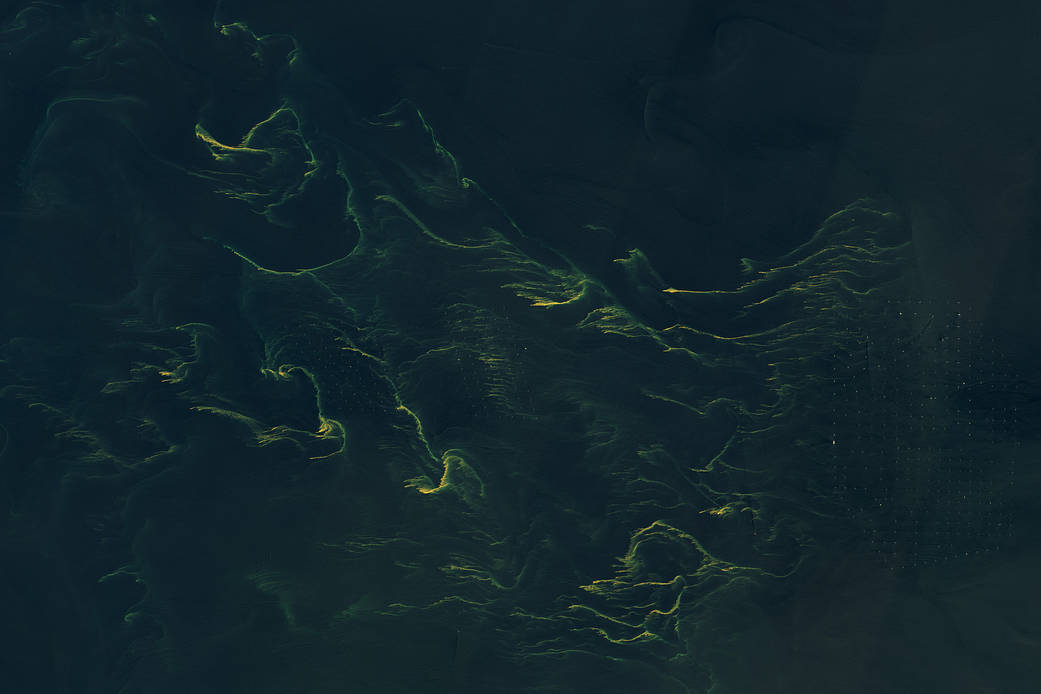As sunlight and warmth increase in the spring and summer, the North Sea starts to gain swirls and tendrils of color. Phytoplankton—tiny, plant-like organisms that often float near the ocean surface—become abundant during this time, giving the shallow water the distinctive look seen in this June 14, 2023, image from Landsat 9.
Phytoplankton turn sunlight and carbon dioxide into sugars and oxygen, and in turn, they become food for the grazing zooplankton, shellfish, and finfish of the sea. They also play an important but not fully understood role in the global carbon cycle, taking carbon dioxide out of the atmosphere and sinking it to the bottom of the ocean.
NASA’s future Plankton, Aerosol, Cloud, ocean Ecosystem (PACE) satellite mission will allow researchers to infer more information about the oceans, such as the concentration and size of particles and dissolved organic materials, the diversity of phytoplankton, and rates of phytoplankton growth.
Image Credit: NASA/Wanmei Liang; USGS




























